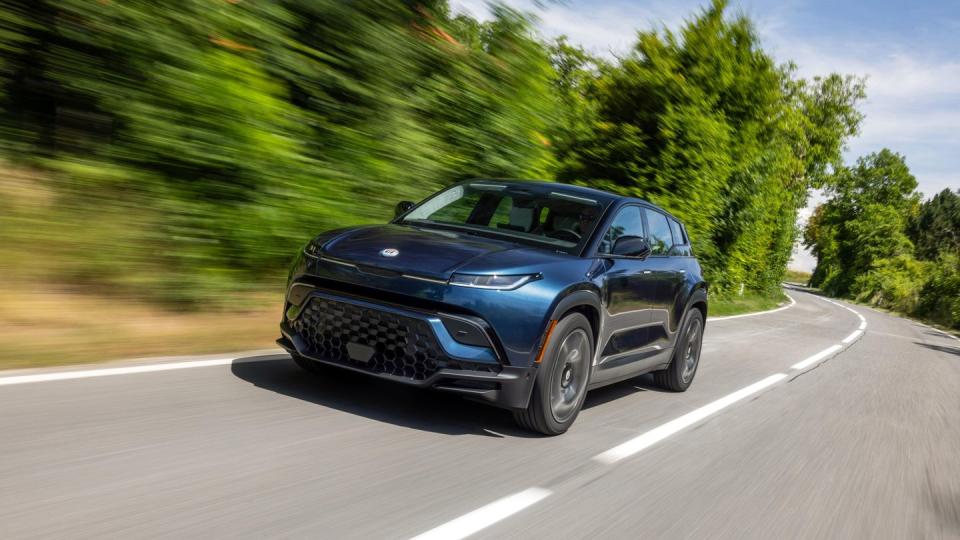Fisker Files for Bankruptcy Protection as EV Market Continues Its Plateau

Electric-vehicle startup Fisker Inc. has filed for Chapter 11 bankruptcy protection after failing to secure a partner for its EV business.
Fisker delivered 4,929 Fisker Ocean electric SUVs last year, but production was abruptly stopped at Magna Steyr's factory in Austria in mid-March 2024 as Fisker ran out of money.
Henrik Fisker might be a heralded car designer, but he is 0 for 2 in his attempts to launch car companies.
What seemed almost inevitable has finally, formally come to pass as Fisker Inc. asked a court in Delaware for bankruptcy protection.
In the filing, Fisker listed assets worth between $500 million and $1 billion against liabilities of $100 million to $500 million.
According to the Chapter 11 court filing, the company listed “between 200 and 999 creditors.”
"Like other companies in the electric-vehicle industry, we have faced various market and macroeconomic headwinds that have impacted our ability to operate efficiently,” Fisker said in a statement. “After evaluating all options for our business, we determined that proceeding with a sale of our assets under Chapter 11 is the most viable path forward for the company."
Running low on cash, Fisker had reportedly been trying to secure a partnership with another carmaker for months. Henrik Fisker himself was reported to have said in a company meeting in April that four carmakers were interested in buying the company. Other reports said Fisker had asked Nissan for a partnership.
Ultimately Fisker was unable to seal a deal with anyone. In February of this year, Fisker warned it could run out of money in the next 12 months. Headquartered in California, Fisker revealed a month ago that its Austrian unit assigned to manufacturing at the Magna Steyr plant had started restructuring through self-administration according to Austrian Insolvency Code.

The company delivered 4,929 Fisker Ocean electric SUVs last year, but Ocean production abruptly stopped at the Magna Steyr factory in mid-March 2024—while Magna was emphatic that production would not restart. Meanwhile, Fisker had appeared at Electrify Expo as recently as a few weeks ago in Long Beach, California, still offering cars for sale.
While we encountered no real problems during a short one-day drive of an Ocean last year, owners had various troubles with the vehicle, many of them software-related.
The biggest problem may be that designing a car is one thing, and building it with all its 6,000 different parts, all of which have to work, is quite another.
Henrik Fisker has certainly designed some of the world’s most beautiful cars in a career that has spanned over 35 years.
After graduating from Art Center in 1989, he went to work at BMW and penned the Z8 roadster, then to Ford as design director of Aston Martin and oversaw the launch of the DB9 and V8 Vantage, followed by the Ford Shelby GR-1 concept car. At Tesla his work contributed to what became the Model S.
He first struck out on his own with Fisker Coachbuild, where he made wide-fendered body kits for the Mercedes SL 55 AMG and BMW 645Ci.
He founded Fisker Automotive in 2007 and that company produced the elegant hybrid electric Karma sedan. But that venture ended pretty much like the latest EV program as insolvency loomed and production screeched to a halt in 2012. As a result, Fisker failed to repay $139 million to the US government for a loan he’d gotten to build the Karma.
Henrik Fisker resigned from Fisker Automotive and founded Fisker Inc. in 2016—and now the new company has collapsed as well.
EV sales have, indeed, slowed if not dropped after taking off in recent years. BloombergNEF's Long-Term Electric Vehicle Outlook (EVO), as reported in Accesswire, shows that “EV adoption is still growing, despite the mixed near-term outlook. The new report indicates that rapidly falling battery prices, advancements in next-generation battery technology, and improving relative economics of electric vehicles with internal-combustion-engine counterparts continue to underpin long-term EV growth globally.”
Almost 14 million electric cars were sold around the world in 2023, bringing the total number in customer hands to 40 million, according to the International Energy Agency. That figure is six times higher than it was five years ago, IEA said. So sales are growing.
“These trends indicate that growth remains robust as electric car markets mature,” the IEA said.
But large car and truck makers in the US, including Ford and General Motors, have delayed or eliminated plans for electric vehicles due to lackluster sales.
Prices for used EVs, meanwhile, have fallen dramatically, dipping below their gasoline equivalents for the first time in February, according to the latest study by iSeeCars.com. EV prices continue to drop faster than those of traditional cars, creating a widening gap in EV vs. gasoline values, according to the study.
All of which suggests the EV market is still in its infancy, as consumers globally continue deciding exactly how much they like these newfangled, silent things.
Was Henrik Fisker a design genius who got in over his head, or do you think he's just reckless with other people's money? Please comment below.

 Yahoo Autos
Yahoo Autos 